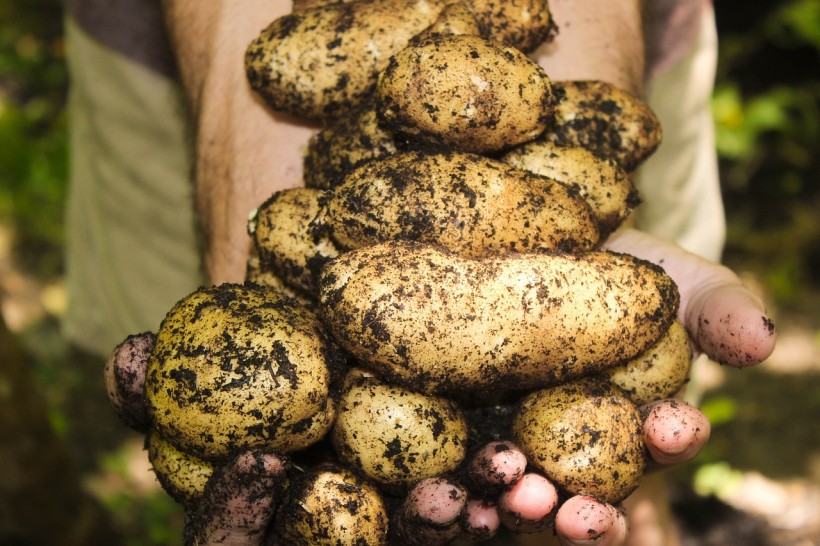As space agencies are geared towards space exploration beyond the low-Earth orbit, they are eyeing the Moon and Mars as the next destination. Although it might take a decade or two for humans to land and build a colony on the Red Planet, they will need to find some sort of housing.
Futurism reported that researchers at the University of Manchester in the UK thought of creating a new construction material for the future Mars mission. It is surprisingly made from potato-based concrete that is said to be twice as strong as standard concrete on Earth.

'StarCrete': Future Homes on Mars Could Be Built Using Potato-based Concrete
Potato House on Mars
In a press release, the British scientists said that they have made fancy space concrete out of potato starch, extraterrestrial dust, and salt. They claim that the material could be used for building homes and infrastructure on the Moon and Mars and that it works much better than the stuff they made before which would have needed blood and urine to work.
They named this potato-based concrete the "StarCrete." The study, titled "StarCrete: A starch-based biocomposite for off-world construction" published in the journal Open Engineering, showed that the surplus starch produced as food could also be used for the construction of affordable and easy-to-build materials for Martian habitats.
The team estimated that roughly 55 pounds (25 kilograms) sack of dehydrated potatoes and starch enough for making half a metric ton of the StarCrete could make 213 bricks for structures.
Combining the potato starch with salt and magnesium chloride from the Martian soil or even from astronauts' tears could strengthen the StarCrete dramatically and could even be baked in normal microwaves or those used in homes.
Laboratory tests simulating Martian regolith also showed that the StarCrete has a compressive strength of 72 Megapascals (MPa) or twice that of regular concrete's 32 MPa rating. More so, creating it with mock moon dust resulted in over 91 MPa, which makes it also viable for humans' upcoming return to the lunar surface.
Alternative For Concrete
To guard against radiation exposure and meteor hits, a continuous human presence on the lunar and Martian surfaces will necessitate homes with strong walls and ceilings.
However, the expense of transferring mass from Earth to space is prohibitively expensive. So, bulk construction materials will be manufactured from locally accessible resources, which is a process known as in situ resource utilization.
As Sci-News reported, the currently proposed solutions for stabilizing regolith for extraterrestrial construction mostly have significant drawbacks. This includes extremely high energy or water use, or the need for additional high-mass mining, transportation, processing, or fabrication equipment, which would increase the cost and complexity of any mission.
But the project's lead researcher Aled Roberts explained that StarCrete can step in as an alternative option. He said in the press release that StarCrete does not need many years of development and does not require high energy or heavy processing equipment to be produced.
The new concrete, therefore, simplifies the mission and makes building structures on the Moon and Mars cheaper and more feasible. Robert and his team in the startup DeakinBio are looking at how similar material could also be used on Earth as a cheaper and greener alternative to mixing concrete materials.
RELATED ARTICLE: Human Sacrifice for Mars Construction? Astronaut Base on Martian Soil Will Allegedly Become Stronger By Using Blood, Urine, Swear and Tears
Check out more news and information on Mars Mission in Science Times.



![Earth's Quasi-Moon Kamo‘oalewa Could Originate From Lunar Surface Not Asteroid Belt [Study]](https://1721181113.rsc.cdn77.org/data/thumbs/full/53275/89/56/50/40/earths-quasi-moon-kamo-oalewa-could-originate-from-lunar-surface-not-asteroid-belt-study.png)










